Promoting international research mobility and creating international talent circulation is an essential condition for robust research and development. To this end, it is important to internationalize the research ecosystem, promote international human resource exchange, and ensure that Japan is firmly integrated into the international brain circulation network. Under this special topic, we will introduce the current status and challenges of Japan's research efforts to promote international brain circulation to produce outstanding research results as well as the attractiveness of Japan's research environment, which is the key to attracting foreign researchers, through a series of interviews with relevant people in the field. In this interview we spoke to Dr. Wang Yuchen, a researcher at the Japan Agency for Marine-Earth Science and Technology (JAMSTEC).
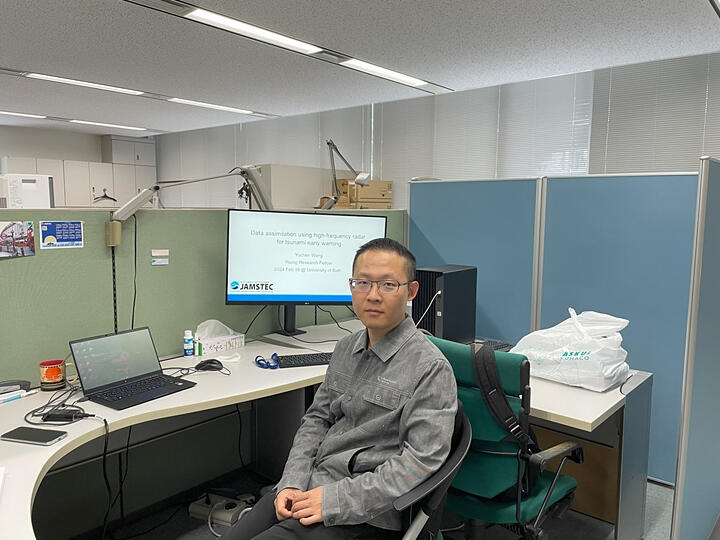
Wang Yuchen graduated from the School of Physics at Peking University in 2016. He obtained his master's degree in Earth and Planetary Science from the University of Tokyo in 2018 and his Ph.D. in the same field in 2021. In 2021, he became a researcher at the Seafloor Seismology and Volcanology Department at the Japan Agency for Marine-Earth Science and Technology (JAMSTEC). He received the Student Outstanding Award from the Seismological Society of Japan in 2019 and the Young Scholar Academic Award from the same society in 2023.
Opportunity to study in Japan arises from the University of Tokyo's UTRIP summer research internship program
— What led you to study in Japan?
Studying in Japan was actually something I had planned to do. At that time, most students from Peking University chose to study abroad in the United States, especially in the School of Physics, where nearly half of the students pursued PhDs in the U.S., often with full scholarships.
However, I had a special connection with Japan. During my third year of university, I participated in a summer research internship program at the University of Tokyo called UTRIP (University of Tokyo Research Internship Program). This program invites undergraduate students from around the world, mainly in their second or third year, to Tokyo University for a 6-7 week research project under the guidance of a professor. I applied for the program through the University of Tokyo's website and worked on a modeling project related to tsunamis during my time there.

At that time, I used fluid dynamics methods to model and simulate the tsunami generated by the 2012 Haida Gwaii earthquake in Canada. Under the guidance of Professor Kenji Satake, I calculated the seafloor deformation caused by the earthquake and then simulated the tsunami propagation using fluid dynamics approaches.
After completing the summer research internship, I returned to Peking University to finish my undergraduate studies. The profound knowledge and inspiring personality of Professor Satake, the excellent academic atmosphere at the University of Tokyo, and the highly organized nature of Japanese society all left a deep impression on me.
At that time, I also applied to several U.S. universities and received full scholarships from Princeton University and the University of Chicago, along with a full scholarship for the Global Science Graduate Course (GSGC) master's and doctoral program in Japan, which offered me the opportunity to pursue further studies at the University of Tokyo. The three universities had different areas of focus: paleoclimate, atmospheric chemistry, and geophysics.
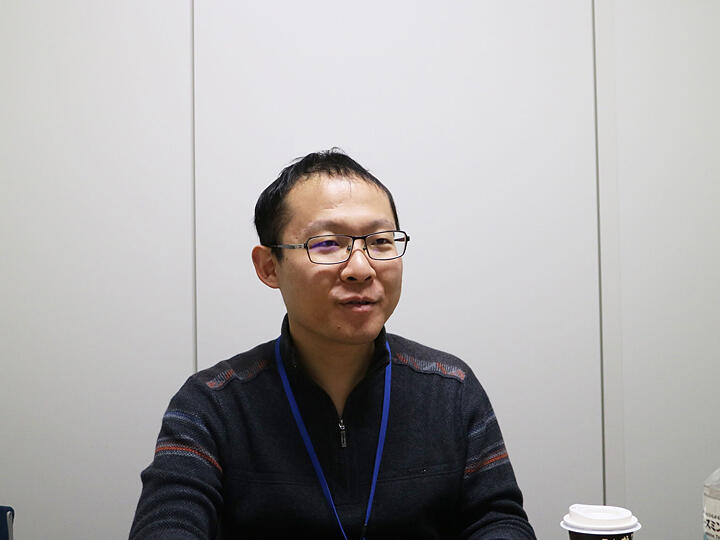
Although the scholarship from the U.S. universities (over $3,000 per month, which was around 300,000 yen at the time) was higher than Japan's (180,000 yen per month), after considering the university's program, the supervising professors, the scholarship amount, and factors like the safety of the environment, I ultimately decided to study geophysics at the University of Tokyo. As for the scholarship, I believed that academic priorities should come first during my student years, and as long as the scholarship was sufficient, it would be fine.
Of course, this decision was also influenced by the UTRIP summer internship program. As mentioned earlier, my 6-7 weeks of research life in Japan left a deep impression on me. My supervising professor, Professor Kenji Satake, is an internationally renowned scholar in the field of earthquakes and tsunamis, which greatly encouraged my decision to study in Japan.
It can be said that UTRIP plays an excellent role in attracting students from around the world to study in Japan. Every year, foreign students who have participated in this program end up studying in Japan.
Another reason was Japan's geographical proximity to China, making it convenient for visiting family. Culturally, there is also a certain degree of similarity.
Making the choice to pursue a research career in Japan after obtaining a Ph.D.
— After obtaining your Ph.D. in 2021, did you choose to continue working in Japan, go to Europe or the U.S., or return to China? How did you make your decision?
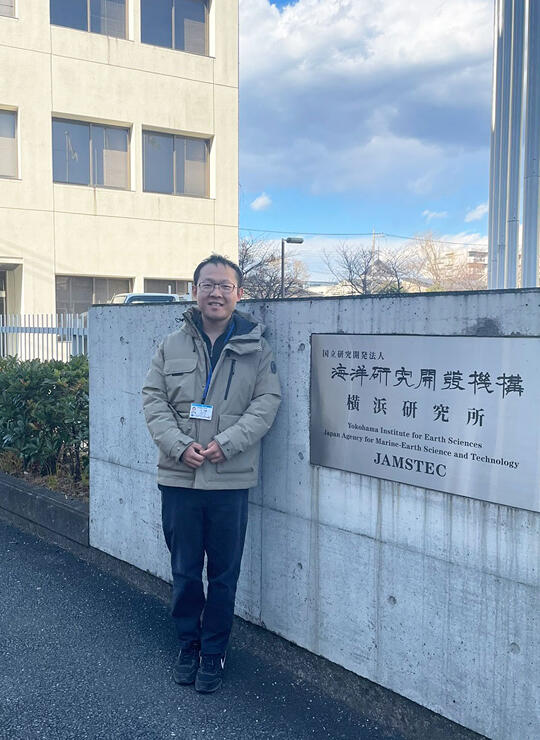
I graduated with my Ph.D. in September 2021. Due to the special circumstances of the COVID-19 pandemic, making any choice during that period was highly restricted—returning to China was difficult with limited flight options and mandatory quarantine upon arrival, and U.S. visa applications were basically suspended. At the same time, the tsunami research I was working on was receiving more attention in Japan. Therefore, when I started looking for a job in July 2020, staying in Japan became the only viable option for me.
Taking up a position at the University of Tokyo was also an option, but Professor Satake's principle was to encourage students to step out of the university. He believed that during the postdoctoral phase, it was important to explore other opportunities, and if I wanted to return to academia later, it wouldn't be too late. So, I chose to join the Japan Agency for Marine-Earth Science and Technology (JAMSTEC). I worked as a postdoctoral researcher there from 2021 to 2024, and in October 2024, I officially became a researcher at JAMSTEC.
Research focused on developing new methods for tsunami early warning
Currently, my research focuses on two main areas: one is studying the duration and cancellation timing of tsunami warnings, and the other is developing new methods for tsunami early warning, which differ from traditional approaches.
It is a common misconception that the first wave of a tsunami is the largest. After the first wave is predicted, many assume the warning can be lifted at any time. However, this is a significant misunderstanding. The second wave of a tsunami can be equal to or even larger than the first. Therefore, it is crucial to accurately determine the timing of both the tsunami warning and its cancellation. If the tsunami warning is not lifted, external rescue personnel will not be able to assist. Additionally, prolonged warning durations can disrupt economic activities. Hence, the duration of the tsunami warning, and specifically the time of cancellation, is a critical research topic.
In Japan, traditional tsunami warnings are based on seismic wave observations, where the source of the earthquake is inverted, and then the tsunami height and arrival time are estimated based on that. In recent years, offshore pressure sensors (S-net, DONET, N-net) have become increasingly available, offering a new method for tsunami early warning. These sensors, placed in the ocean, detect pressure changes, and from these changes, we can infer the height of the sea surface and then estimate the tsunami conditions. However, using offshore observation data to predict the tsunami waveform along the coast requires significant processing, and the accuracy can be influenced by tidal currents, ocean currents, and even seismic waves.
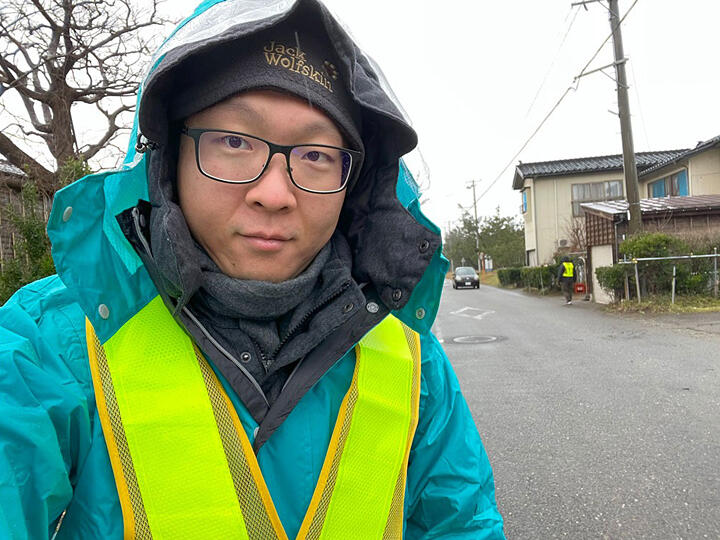
In addition to offshore pressure sensors, ocean radar can also be used for tsunami early warning. Ocean radar measures the offshore seawater flow speed, which helps determine whether a tsunami has occurred and the strength of the tsunami. This method provides a completely different set of data for tsunami observation compared to traditional methods.
Originally, ocean radar was set up for fisheries and used to observe ocean currents along the coast to determine suitable fish species and the best times for aquaculture. JAMSTEC and Hokkaido University have set up such ocean radar in the Tsugaru Strait. I applied ocean radar flexibly to the tsunami forecasting field, adding new functionality to the existing facilities.
On January 15, 2022, the volcanic eruption of the Hunga Tonga-Hunga Ha'apai underwater volcano caused a tsunami. I used data from the ocean radar set up in the Tsugaru Strait to explain the tsunami's arrival in Japan, demonstrating the feasibility of using ocean radar for tsunami forecasting. This was the first time ocean radar had been used with actual data for a volcanogenic tsunami.
Based on this, we suggest installing ocean radar near power plants. Most power plants in Japan are located near the coast, and these plants can supply power to the radar. The radar can detect tsunamis, thus providing protection for the power plants, creating a mutually beneficial relationship between the two.
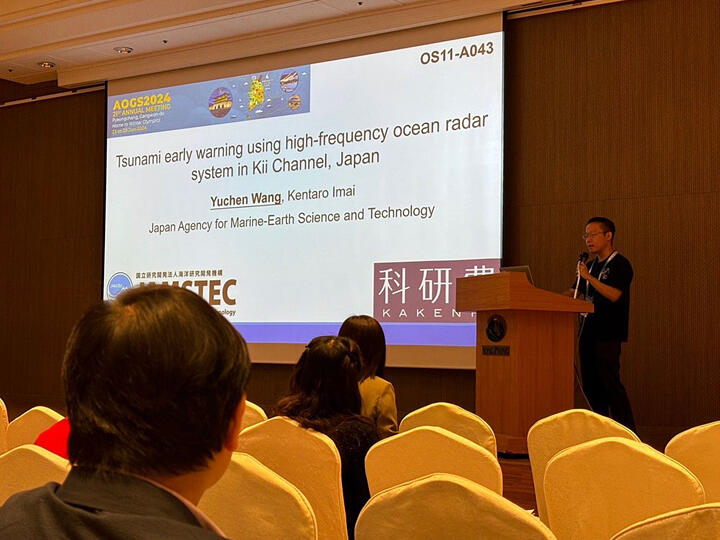
For potential Nakai Trough earthquakes, which are a major concern, tsunami forecasting can also be done by setting up ocean radar in key areas. In the future, if seafloor pressure sensors and ocean radars are installed along the entire coastline of Japan, they will play an important role in disaster prevention and reduction.
Currently, the observation range for tsunami forecasting using ocean radar is about 80 to 90 kilometers (theoretically, longer distances are also possible, but this would require more advanced noise processing capabilities). The forecasting time is approximately 15 to 20 minutes. Personally, I hope that in the future, we can observe tsunamis from farther distances to provide more time for the public to respond.
In recognition of my work in developing new methods for tsunami early warning through offshore observation, I was awarded the 2019 Outstanding Student Presentation Award and the 2023 Young Scholar Academic Award by the Seismological Society of Japan.
"To attract international talent, research positions must be made objects of admiration in society"
— Japan has proposed the slogan of " International Brain Circulation," aiming to attract elite foreign research talent to Japan, while also encouraging Japanese researchers to go abroad and eventually return to Japan. What policies or support do you think Japan needs to provide in this regard?
The first issue is salary compensation.
In many countries, the salary for researchers is generally lower compared to the private sector. For instance, working in universities or research institutions usually offers a lower salary compared to a similar role in a company. For example, my classmates working as faculty members at universities in the United States have an annual salary of around $60,000 to $70,000, but if they worked in Silicon Valley, their salary would typically be between $500,000 to $600,000. In China, staying in universities for faculty positions also results in lower wages compared to working for IT giants. This issue also exists in Singapore and Europe, and Japan is no exception.
However, when comparing between countries, Japan's research salaries appear even less competitive due to the depreciation of the yen. A $70,000 salary for a young faculty member in the U.S. would be over 10 million yen if converted at an exchange rate of 1:150. Japanese universities or research institutions find it difficult to offer such high salaries to doctoral researchers or young researchers. Currently, most young researchers in Japan earn an annual salary between 4 to 5 million yen, which is not competitive compared to other countries. Unless a particular research project is unique to Japan and can only be conducted there, it is hard to attract international talent, especially Western researchers, to Japan based solely on salary.
If Japan could offer young researchers an annual salary of 8 million yen, along with clear career advancement and financial growth opportunities, they might feel more secure in pursuing research in Japan.
From a personal perspective, when you are pursuing your ideals and doing meaningful work, financial concerns naturally take a backseat. However, from a societal perspective, research positions should be made careers that society aspires to and admires. If doctoral students go through such hardships during their studies and thesis writing, only to find that after graduation they still struggle to make ends meet, then research positions lose their social status, and it becomes hard to make people aspire to a career in research. Without aspiration, fewer people will be drawn to the field.
Of course, solving the salary issue is not easy. Therefore, aside from salary, Japan can take actions in three other areas.:
- Create a Policy-Friendly Environment: Many places around the world are imposing more restrictions on the freedom of research for security reasons. If Japan can foster a more inclusive and friendly research environment without imposing more policy barriers, it will attract excellent international researchers to Japan. Of course, national security concerns must be taken into account, but it is important to find a balance.
- Promote Research Internship Programs for Young Students: Programs like the University of Tokyo's UTRIP are excellent. These programs allow university students to participate in short-term research internships to learn about Japan's research environment, experience its excellent safety atmosphere, and attract them to pursue research careers in Japan after graduation.
- Sufficient Research Funding: Adequate and continuous research funding is crucial for researchers to focus on their work. With sufficient funding, researchers can make long-term plans, explore ideas requiring financial support, and build confidence in their research. Japan's increasing adoption rate of research funding and the growing number of researchers securing grants are very positive developments.
Making Japan a hub for research talent
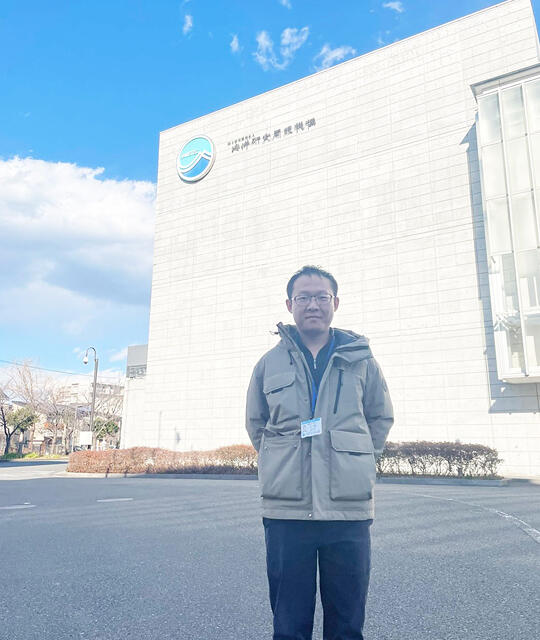
International talent circulation has an important form, which is as a hub for talent. That is, it is not necessary to make outstanding foreign talent settle in Japan permanently. A short-term exchange model, such as one or two years, can be used to attract international talent, and I think this is feasible.
More actively inviting internationally renowned scholars to Japan's research institutions for short-term guest research, with funding guarantees, is also a good strategy. The role of top scientists is not just a one-on-one exchange between individuals, but in facilitating mutual exchange relationships between Japanese and foreign institutions, enabling the exchange of students, visiting scholars, etc., and thereby promoting scientific research exchanges between countries. It may be difficult to have top-tier international scientists settle in Japan long-term, but short-term stays are entirely possible and can play a role in expanding research networks and promoting talent circulation.
I believe that, in the current situation, Japan is still a suitable place for studying abroad. First of all, the overall academic atmosphere in Japan is still relatively stable. Another reason I recommend Japan is that Japan's scholarships are not deducted from the advisor's research funding; they are mostly provided by the government, universities, or enterprises. Students and professors do not have a financial relationship, and students do not become the "tools" of their professors. In contrast, many doctoral students in the United States refer to their advisors as "bosses," resembling a "quasi-employment relationship"—receiving money from the advisor and working for them. In Japan, the relationship between students and professors is more like what Han Yu said in his letter "Discourse on Teachers": "A teacher is someone who imparts knowledge, teaches skills, and resolves doubts." For those who are truly passionate about research, Japan offers a more straightforward learning environment.
If you have a true passion for exploring the unknown, I think pursuing academic research is a good choice. Based on my own experience, I believe that choosing to engage in research in Japan was the right decision.
Interviewed on February 10, 2025, by the JST Asia and Pacific Research Center
Interview/Editing: Cao Hui, Editor-in-Chief of JST Keguan Japan
Photos: Wang Yuchen, Keguan Japan Editorial Team
Produced by the Science Japan Editorial Team




